Learn more about Associate, Jonah Garoutte in his Staff Spotlight, where he shares his interests and motivations.
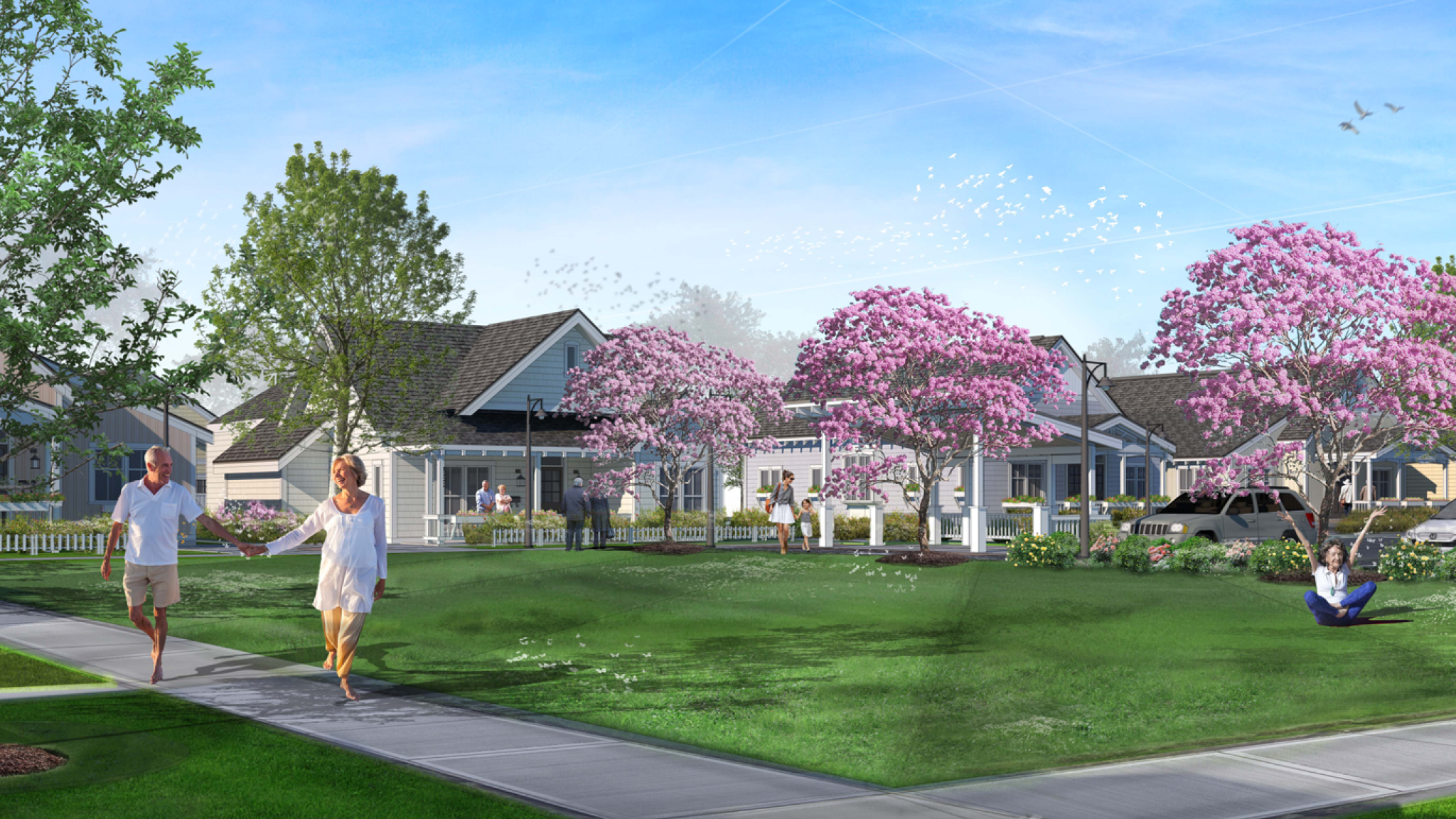
By Zachary Benedict, AIA, LEED AP
Most of us are lonely. At least that’s what surveys say. When asked, over half of American admit that they struggle to have meaningful, in-person relationships.
If given the attention it deserves, loneliness could be classified as a national epidemic. However, to accept such a claim requires us to admit that, in some way, the solution rests in our ability to depend on one another – something many of our communities have been reluctant to acknowledge… until recently.
The American Dream has had a complicated relationship with the construction of housing for over a century – one that has consistently confused an interest in independence with an obsession with isolation. Exaggerated by the rapid growth of post-war suburban sprawl, the idea of “home” became less concerned with our longstanding commitment to “life, liberty, and the pursuit of happiness,” and more focused on creating domestic fortresses committed to securing our privacy and eliminating our reliance on shared amenities.
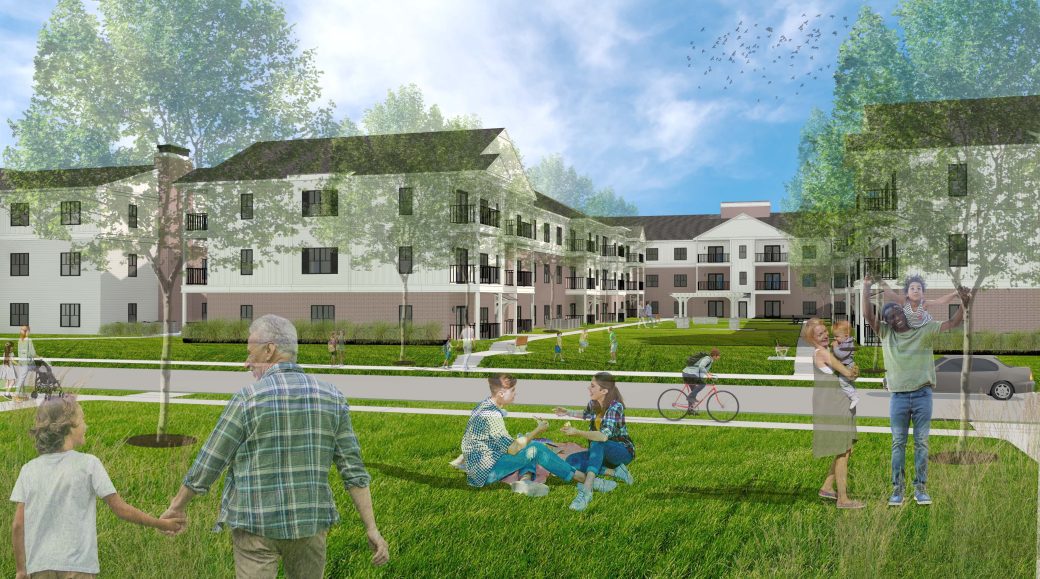
Arcadia Apartments at Providence Place, Fort Wayne, Ind.: A large-scale development focused on providing a wide variety of mixed-income living options that prioritize dense, multigenerational housing along a series of semi-public spaces (porches, balconies, trails, etc.) designed to foster pedestrian activity and social interaction.
Over time, this mentality dramatically shaped the conventional approach to modern housing. For many of us, current housing models aren’t seen as a common starting point from which we go out and experience the world. They represent an isolated retreat where we escape from the realities of our everyday routines. An approach that has left us alone and detached from the larger world around us.
Today, over thirty-six million Americans live by themselves – the highest proportion of the population in our nation’s history. And while the growth of these one-person households may still support our stubborn obsession with independence, their physical development has also exponentially increased the sense of isolation and loneliness experienced throughout our communities.
As Susan Pinker notes in her book The Village Effect: How Face-to-Face Contact Can Make Us Healthier and Happier, “While living alone doesn’t necessarily mean that you are lonely, it does mean, like it or not, that you have less physical proximity to other human beings whom you care about and who have an interest in your survival – fewer impromptu conversations, fewer shared puns and jokes, and, of course, less physical contact.” Why is this so important? Because it’s precisely what keeps many of us alive.
“The American Dream has had a complicated relationship with the construction of housing for over a century – one that has consistently confused an interest in independence with an obsession with isolation. Exaggerated by the rapid growth of post-war suburban sprawl, the idea of “home” became less concerned with our longstanding commitment to “life, liberty, and the pursuit of happiness,” and more focused on creating domestic fortresses committed to securing our privacy and eliminating our reliance on shared amenities.”
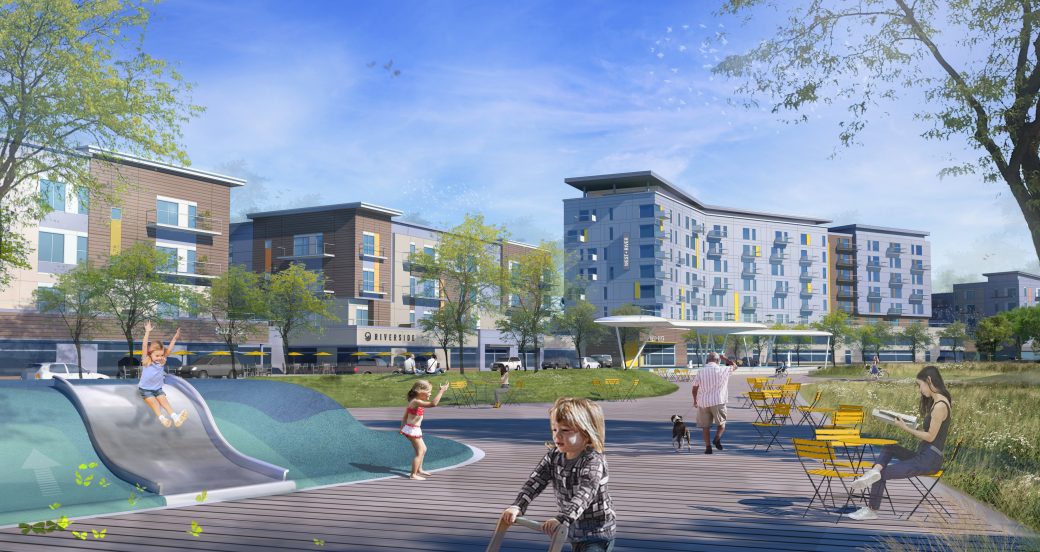
High Street Riverfront Development, Fort Wayne, Ind.: A mixed-use, multi-phase development consisting of 1,200 market rate apartments and ample commercial space overlooking the revitalized riverfront and views of the adjacent downtown.
Research has consistently shown that a rich network of face-to-face relationships create a biological force field against disease. The impact of connectivity staggering – with results ranging from decreased cases of dementia to cancer survival (where women with breast cancer found that those with a large network of friends were four times more likely to survive than those with sparser connections).
As Pinker notes, “those who experienced various kinds of social contact increased their odd of survival – not just by a little, but by 91 percent, nearly doubling their odds of dodging the ultimate bullet for a long while. It wasn’t simply a question of living alone, or being married or single. What was important was being part of a community in more ways than one. That feeling of belonging had to come from interacting with people you really know, in what the research called naturally occurring social relationships.”
This realization highlights the growing burden of modern housing. As communities look towards the future and come to grips with the shifting preferences of growing Millennial families and aging Baby Boomers, the housing industry will be faced with the realization that it can no longer afford to qualify housing by its ability to limit our need for shared amenities. Instead, the market will need to understand its role in empowering people to foster meaningful connections within the surrounding neighborhood.
As we look to strengthen our ability to sustain meaningful physical relationships, housing will need to shift away from developing clusters of segregated homes and move towards a model that prioritizes social interaction. It’s a strategy that will rely on the industry’s willingness to reinvest in semi-public space.
It’s easy to think of the built environment consisting of two types of spaces: public and private. However, in order to incentivize socialization, these spaces cannot afford to be binary. Unlike what communities commonly experience in modern suburban developments, the transition between each space should be gradual and overlapping. By locating a series of semi-public spaces along the boundary between the two, people are offered the opportunity to voluntarily engage (actively or passively) with the wide variety of activities found in the public realm.
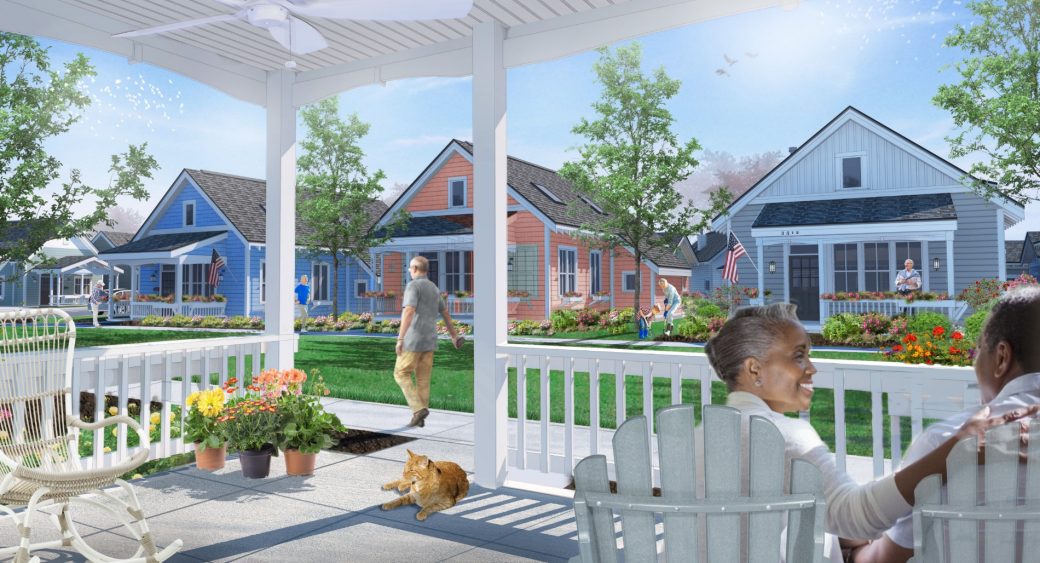
Piper Trail, Fort Wayne, Ind.: A innovative neighborhood development consisting of over 40 cottage-styled, detached homes centered around a collection of pocket parks that prioritize pedestrian connectivity (while concealing views of vehicular traffic).
The quintessential example of this has traditionally been the front porch. Offering a clear extension of the private residence, the porch provides an aperture to the larger community – serving as a transitional space where engagement is welcomed, and passersby are engaged. However, as economic development continued to grow its infatuation with vehicular traffic, the evolution of residential design began to ignore pedestrian activity in hopes of accommodating the growing demand for vehicular traffic. Over time, the semi-public spaces that ensured the vibrancy of our neighborhoods and offered a platform of social connectivity were abandoned, trading the welcoming identity of the front porch for the isolated security of the opaque garage door.
The success of these semi-public spaces is not simply due to their physical dimensions, but their proximity to public activity. At their best, they don’t simply allow for social interaction – they encourage it, and their presence solidifies an appreciation for a shared communal identity.
To combat the growing dangers of loneliness facing America, the housing market will be forced to understand how it can feasibly reintroduce modern living to this idea of semi-public space. It’s a notion that will likely come in all shapes and sizes; however, four key themes will likely need to be explored to provide effective housing for future generations:
- Density: Housing that provides highly concentrated living that relies on dense clusters of units that respect and cater to the pedestrian scale. Models such as “pocket neighborhoods” focus on clustering detached family housing around centralized lawns to limit exposure to vehicular traffic and focus on a shared commons.
- Diversity: Housing developments that provide a variety of mixed-use, mixed-income options that incentivize organic neighborhood development that supports a diverse collection of people and activities.
- Cooperation: Housing developments that use semi-public space (porches, balconies, trails, etc.) as a primary planning principle for wayfinding and organization.
- Equity: Housing developments that provide equitable access to a variety of civic amenities (i.e., public parks) and economic opportunities (i.e., jobs) within walking distance for people of all ages and abilities.
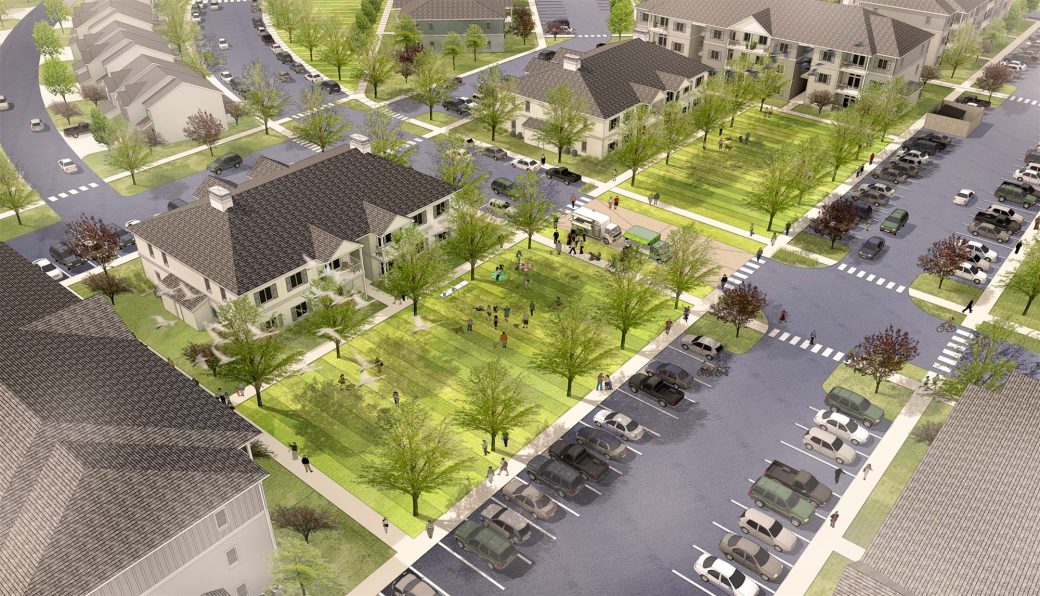
Park’s Edge at Village Premier, Fort Wayne, Ind.: A mixed-use, mixed-income development featuring a Low Income Housing Tax Credit (LIHTC) development with over 220 apartments positioned around a series of centralized malls that engage shared pedestrian entries and prioritize the “eyes on the street” of the porches and balconies above.
Several housing developments through Indiana have begun to explore how these ideas can inform modern housing strategies throughout the state with notable success. While the size and scale of each development has varied widely, their commitment to reframing housing as a social mechanism has provided an exciting and well-received product within an otherwise highly competitive market.
The future of housing will be focused on understanding how the residential market can sustainably transition itself away from conventional strategies and realize effective ways to incentivize development patterns that empower people to support one another at the local level.
Communities can no longer afford to see housing as a segmented collection of private endeavors. Our homes aren’t something we retreat to in isolation. They serve as a point of departure – a platform from which we go and see the world around us. It’s a springboard to opportunity and the conduit to our most meaningful relationships.
That’s why housing matters.


